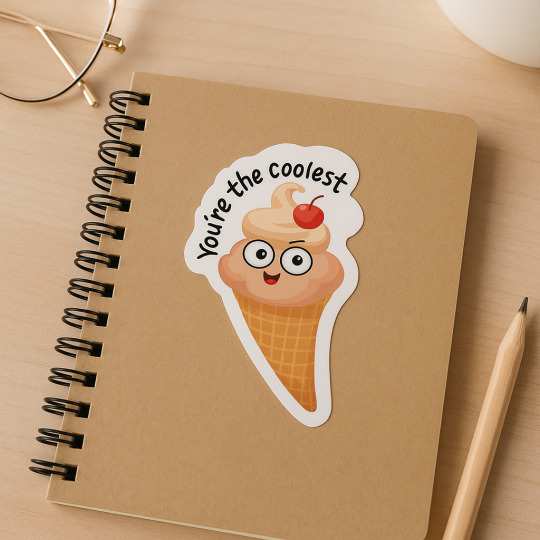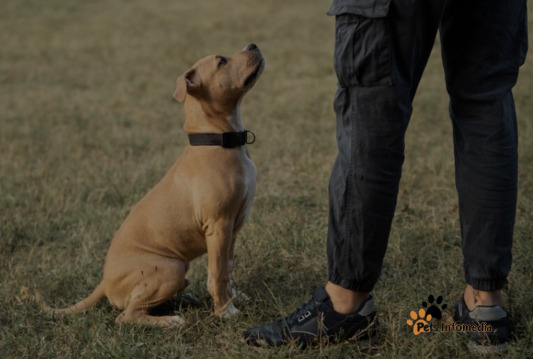#PositiveReinforcement
Explore tagged Tumblr posts
Text
Managing Stubborn Children Effectively
This guide explores 10 scientifically-backed strategies for managing stubborn behaviour in children. Key techniques include active listening, offering choices, and using positive reinforcement. Establishing clear rules, showing empathy, and avoiding power struggles are crucial. Additionally, storytelling, allowing breaks, modelling calmness, and channelling energy into activities can foster cooperation. These approaches aim to improve relationships and encourage positive behaviour over time.
For more video click here
#parenting#stubbornchild#positivereinforcement#activeListening#childbehavior#Managing#Stubborn Children Effectively#Stubborn#Children#Children Effectively
2 notes
·
View notes
Text

If you’ve been longing for a supportive writing community to help you reach your goals, the 1 Million Words Club is exactly what you’ve been looking for: supportive, encouraging, diverse, and engaged. If you are looking for a group of writers to help you with your accountability and your writing goals, please join us!
Founding memberships at $5.99/mo still available!
#1MWC#1MillionWordsClub#WritingGroups#WritingCommunity#WritingProductivity#WritingSupport#writersSupportingEachOther#writingAccountability#PositiveReinforcement#AmWriting#WritingSprints#WritersSupportingWriters
2 notes
·
View notes
Text

FNGEEN 464PCS Punny Teacher Stickers – 220 Delightfully Motivational Designs to Inspire
Add a splash of humor and encouragement to your classroom with the FNGEEN 464PCS Punny Teacher Stickers – featuring 220 unique, delightfully motivational designs. These fun and colorful stickers are perfect for rewarding students, decorating planners, and inspiring positivity in learning environments. A must-have for teachers, tutors, and homeschoolers who want to make education engaging and uplifting.
#PunnyTeacherStickers#TeacherMotivation#StudentRewards#ClassroomSupplies#FunLearningTools#PositiveReinforcement#EducationalStickers#HomeschoolEssentials#BackToSchoolGear#FNGEENStickers
0 notes
Text

Expert Dog Training in Plano Texas
Looking for reliable and effective dog training in Plano Texas? PAW Oasis Pet Resort offers personalized training programs designed to improve your dog’s behavior, obedience, and social skills. Our experienced trainers use positive reinforcement techniques to help your furry friend thrive. Book a session today and give your dog the training they deserve!
0 notes
Text
This Masterclass Series covers everything from training to health and well-being. My friend Ness Jones has brought together 21+ top experts and specialists for this complimentary training series on all things dog!
🗓️ The summit runs for 5 days starting on June 1 (USA time) – make sure you check the timezone in your location!
🎟️ All you have to do is click this link to sign up 👉
https://lnkd.in/dd7n8NjR. Here’s what to expect: 🐶 21+ dog professionals, trainers & behavior consultants 🐾 Senior dog health & longevity 🐕 Reactivity & behavioral issues 🧠 Understanding stress, prey drive & the canine mind 💡 And so much more...
Join us for this one-of-a-kind dog-loving experience!
#DecodingYourCanine#DogSummit2025#DogTrainingTips#CanineWellbeing#DogHealth#ReactiveDogHelp#SeniorDogCare#DogLoversUnite#PawfectDog#DogBehavior#PetParentLife#DogExperts#HealthyDogsHappyLife#CanineMindset#PetCareCommunity#DogTrainingSummit#FreeDogTraining#DogMasterclass#PetWellness#DogLife#PositiveReinforcement#DogParents#DogObsessed#TrainYourDog#DogCareTips
0 notes
Text

Customized Dog Training in DTLA
Discover how South Park Doggieland’s personalized dog training programs in Downtown Los Angeles can transform your pup's behavior. Tailored to your dog's unique personality and needs, their expert trainers focus on obedience, socialization, and leash manners using positive reinforcement techniques. Whether your dog is shy, energetic, or reactive, these customized sessions aim to build confidence, improve behavior, and strengthen the bond between you and your furry friend. Experience the benefits of individualized training designed for urban living. Read More: https://www.southparkdoggieland.com/blog/transform-your-pups-behavior-with-customized-dog-training-dtla
#\#DogTraining#CustomDogTraining#PuppyTraining#DTLADogs#PositiveReinforcement#WellBehavedDogs#DogBehavior#TrainYourDog#UrbanDogLife#DogTrainingTips#SouthParkDoggieland#HappyPup#DogObedience#DogSocialization#DogTrainer
0 notes
Text
Teacher Emoji Stamps, Self-Inking Teacher Stamps
The Teacher Emoji Stamps | Self-Inking Teacher Stamps are a fun and engaging way to give students feedback they’ll actually look forward to! Featuring bright, expressive emoji faces paired with encouraging phrases, these stamps help teachers quickly mark assignments while adding a cheerful, personal touch. With a self-inking design, each stamp delivers clean, consistent impressions—no ink pad needed. Perfect for grading, classroom motivation, or reward systems, these stamps make it easy to communicate with students in a way that’s both effective and fun.
Product Highlights:
😊 Expressive Emoji Designs – Includes a variety of fun, relatable faces students love.
🖋️ Self-Inking Convenience – Built-in ink pad for mess-free, fast stamping.
📚 Perfect for Classrooms – Great for grading, encouraging effort, or reinforcing positive behavior.
🔁 Reusable & Durable – Long-lasting construction for repeated daily use.
🎁 Ideal Teacher Gift – A thoughtful and practical present for any educator.
✨ Bright & Clear Impressions – High-quality stamps ensure every mark is bold and visible.

#TeacherStamps#EmojiStamps#SelfInkingStamp#TeacherTools#ClassroomSupplies#PositiveReinforcement#GradingMadeFun#MotivateStudents#TeacherLife#FunFeedback#ClassroomMotivation
0 notes
Text

#Helping#Management#ManagementTips#LiftingWomenUp#SelfImprovement#SelfEsteem#KnowingIsHalfTheBattle#PositiveReinforcement#EveryoneWins
0 notes
Photo

Celebrate your progress so far this week. Acknowledge your wins! Gratitude unlocks the fullness of life. Appreciate the journey, not just the destination
#PositiveReinforcement#JobSearchJourney#Thankful#Perspective#yourDEES#DEEmploymentSolutions#BlackOwnedBusiness#BlackNonprofit#SupportSmallBusiness
0 notes
Text

🐕🦺 Wag Chicken Flavor Training Treats for Dogs 🍗 Reward your pup’s best behavior with these irresistible, protein-packed training treats! Perfect for obedience training, agility drills, or just spoiling your furry friend.
🌟 Why trainers and pups love these: ✅ Soft & Quick-Eating: Ideal for rapid rewards during sessions ✅ Real Chicken Flavor: High-value motivation for even stubborn dogs ✅ Natural Ingredients: No artificial colors, flavors, or preservatives ✅ Low-Calorie: Great for frequent training without overfeeding
📈 Pro Training Tip: Use these bite-sized treats to reinforce commands like "sit," "stay," or "paw" – your dog will work for that chicken goodness!
#dog#cute dog#puppies#DogTraining#DogTreats#ChickenFlavor#WagBrand#PositiveReinforcement#PuppyTraining#HealthyPets#DogLovers#PetHacks#DogMomLife#DogDadLife#HighValueTreats#TrainWithLove#NaturalDogFood#PetWellness#DogObedience#HealthyRewards#WagTreats#TrainSmart
1 note
·
View note
Text
How to Train Puppy to Sit Stay
Training a puppy to sit and stay is all about patience and practice. Begin with the 'sit' command, using treats as a guide and rewarding them for success. Once sitting is consistent, introduce 'stay' by stepping back and gradually increasing the time. Positive reinforcement and consistency are key to success.

0 notes
Text
How to Use Pet Accessories to Promote Good Behavior
For cheap and best Dog Products - https://dogiclub.com/
Pet accessories are not just about style; they can play a crucial role in promoting good behavior in your furry friends. Whether you're looking to train your dog, improve their health, or simply keep them comfortable, the right accessories can make a world of difference. Here's how to use pet accessories effectively to foster good behavior in your pet.
1. Use Proper Collars and Leashes for Training A well-fitted collar and leash are essential tools for training your dog. They not only ensure safety but also provide control, making it easier to teach your dog basic commands such as sit, stay, or walk properly. A harness may be a good alternative for dogs prone to pulling, as it distributes pressure more evenly. When your pet associates good behavior with the use of these accessories, they will become more responsive and well-behaved.
2. Interactive Toys for Mental Stimulation Interactive toys, such as puzzle feeders or treat-dispensing balls, are excellent for keeping your pet mentally stimulated. These toys encourage dogs to think and solve problems, which can prevent boredom and the negative behaviors associated with it, like chewing on furniture or excessive barking. By using such toys, you're not just entertaining your pet but also promoting self-control and patience.
3. Comfortable Bedding for Rest and Relaxation A good night's sleep is vital for a pet’s overall well-being. Providing comfortable pet bedding helps your dog get enough rest, which in turn reduces hyperactivity and anxiety. When dogs are well-rested, they tend to be calmer, more focused, and less likely to engage in disruptive behavior.
4. Training and Correction Accessories Training accessories like clickers, treat pouches, and positive reinforcement tools are key to encouraging good behavior. By using these items consistently, your dog learns to associate positive behavior with rewards, reinforcing desired actions. Additionally, training collars or no-pull harnesses can help modify unwanted behavior, such as jumping or pulling on walks, leading to a more disciplined pet.
5. Grooming Tools for Regular Maintenance Grooming tools, like brushes and nail clippers, not only keep your pet looking good but also provide an opportunity to bond and build trust. Regular grooming reduces discomfort that may lead to bad behavior, such as scratching or biting. Keeping your pet clean and well-groomed also contributes to a healthy lifestyle, which can promote a happier, more balanced pet.
By incorporating these pet accessories into your routine, you’ll help promote positive behaviors that benefit both you and your pet. Whether for training, comfort, or health, these tools are integral to ensuring your furry friend stays happy and well-behaved.
#petaccessories#dogbehavior#dogtraining#dogcare#doggrooming#petproducts#interactivepets#comfortabledog#dogbed#positivereinforcement#dogtrainingtools
1 note
·
View note
Text

D-FantiX 800PCS Punny Teacher Stickers – Fun, Motivational Rewards to Brighten Any Classroom
Bring joy and motivation to your classroom with the D-FantiX 800PCS Punny Teacher Stickers – a vibrant collection of fun, pun-filled stickers perfect for rewarding students, decorating assignments, and encouraging positive behavior. Ideal for teachers, homeschoolers, and classroom organizers, these stickers make learning more engaging and uplifting.
#TeacherStickers#PunnyStickers#ClassroomRewards#StudentMotivation#TeacherSupplies#PositiveReinforcement#BackToSchoolEssentials#FunClassroomTools#EducationalStickers#D-FantiXStickers
0 notes
Text
The Impact of Viral TikTok Challenges on Social Issues
#tiktok#socialissues#viralachallenges#impact#awareness#activism#society#culture#trends#positivereinforcement#communitybuilding#fundraising#education#empowerment#mentalhealthawareness#bodypositivity#educationreform#environmentalism#safetyconcerns#cyberbullying#misinformation#peerpressure#negativebodyimage#mentalhealthrisks#fakenews#socialcomparison#riskybehavior
0 notes
Text
A New Way to Train Your Dog with Soccer & Football
Imagine your dog running freely on the field, learning to focus and obey through the excitement of soccer and football. At South Park Doggie, training turns into a game, blending obedience with play. It’s not just about commands—it's about building a bond while boosting your dog’s behavior. Watch them grow smarter and more social with every pass and goal! Want to see the transformation? Explore more here.
#DogTraining#ObedienceTraining#SoccerForDogs#FootballForDogs#ActiveDogs#DogBehavior#PositiveReinforcement#DogObedience#PetTraining#FunDogTraining#DogSocialization#LAActivities#DogBonding#PlayfulTraining#SouthParkDoggie
0 notes